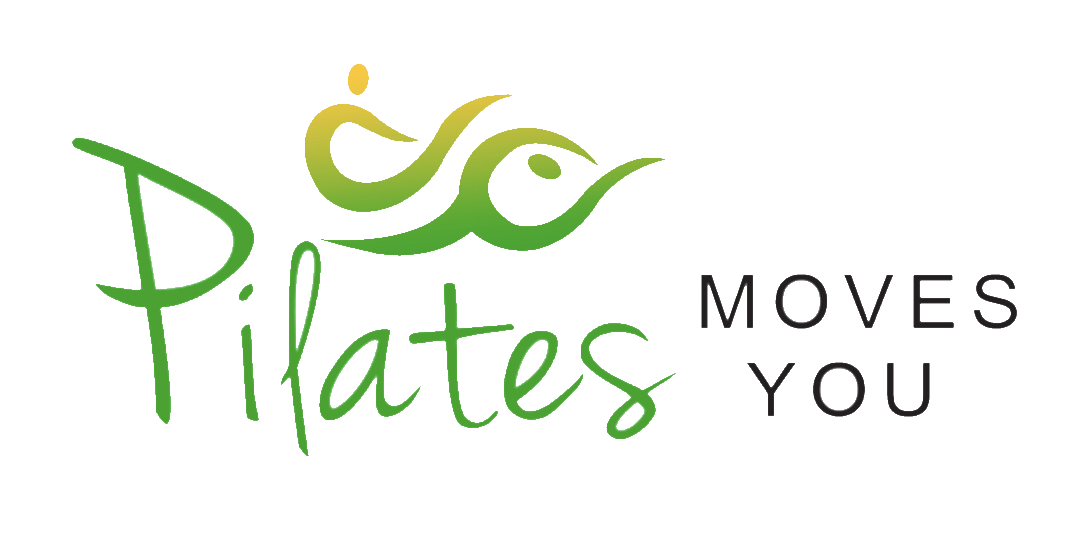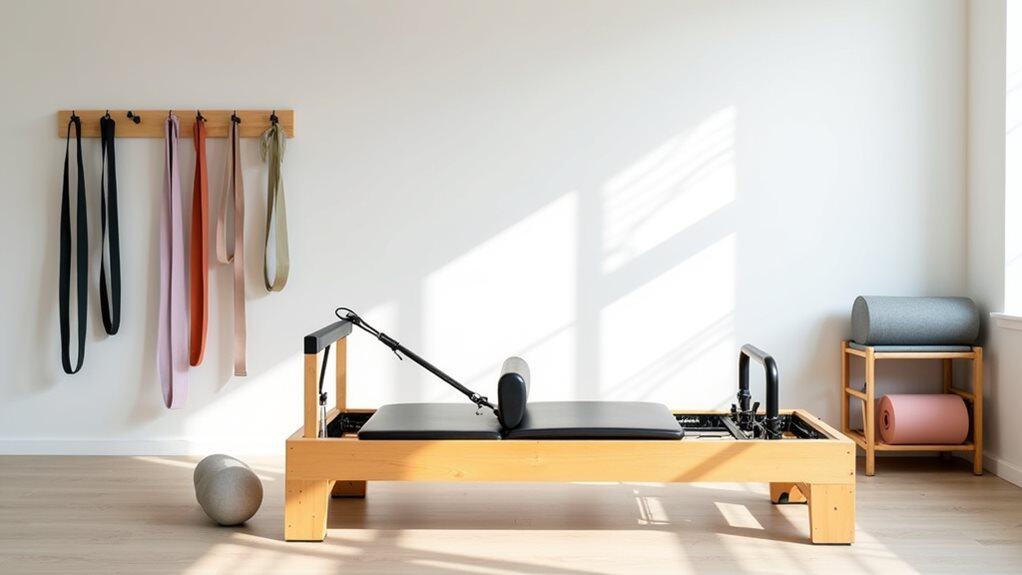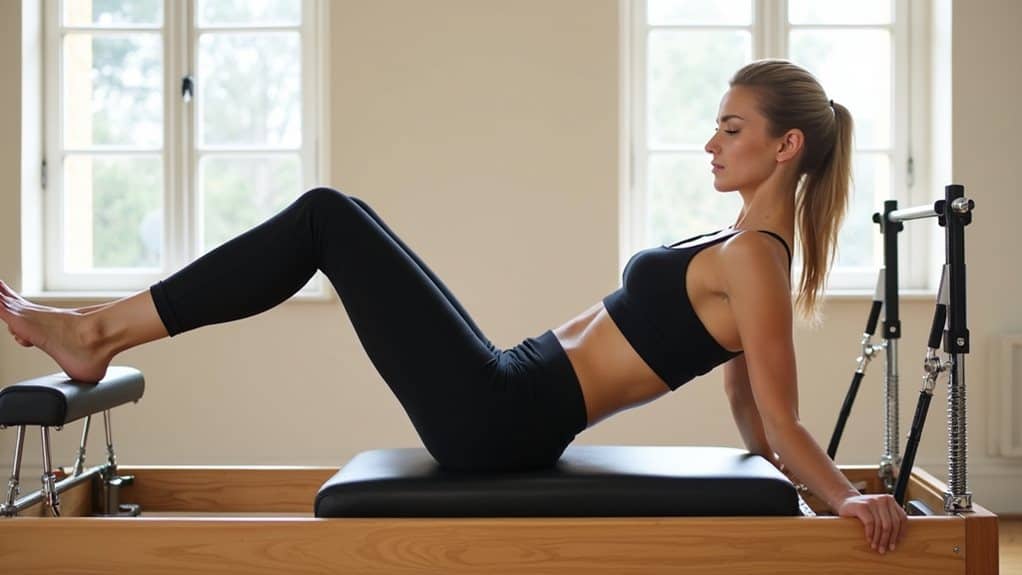You’ve probably tried everything to touch your toes, from wishful thinking to bribery, but have you given the Pilates Swan a whirl?
This graceful exercise isn’t just about looking elegant on the mat; it’s a dynamic way to enhance your flexibility.
When you’re in the throes of the Swan, you’re stretching your abdominals, hip flexors, and quads, which might just be the ticket to bending without breaking.
It’s not only about loosening up those tight muscles; the Swan dive also fortifies your back, boosts your posture, and gives your spine a new lease on life.
And let’s not forget the core engagement that comes along for the ride, offering you strength that complements your newfound suppleness.
So, if you’re ready to transform your rigid routine, let’s glide into how the Pilates Swan can make you as flexible as a rubber band.
Pilates Swan Basics
Understanding the Pilates Swan’s fundamentals will ensure you’re maximizing its flexibility benefits for your body. When performing the Pilates swan, you’re engaging in a back extension exercise that targets multiple muscle groups.
You start lying face down on the mat, with palms flat and arms bent. As you lift your chest, you’re enhancing the strength and range of motion in your spine. It’s essential to maintain control and precision to activate your back muscles effectively without strain.
The Pilates swan isn’t just about upward movement; it’s a holistic exercise that promotes spinal health, core engagement, and total body strength. With regular practice, you’ll notice an improvement in your posture and increased flexibility in your hip flexors and spine.
Flexibility Benefits
When you perform the Pilates Swan, you’re directly enhancing your spinal mobility through the exercise’s gentle extension movements.
This increase in spinal flexibility also translates to greater muscular elasticity, particularly in the back and core muscles.
As a result, you’ll find your overall movement becomes more fluid and less restricted.
Enhances Spinal Mobility
Through regular practice of the Pilates Swan, you’ll notice a marked improvement in your spinal mobility as the exercise effectively targets and stretches the back muscles. Here’s how the Swan enhances spinal mobility:
- Back Extension: Engaging in Swan promotes back extension, which is crucial for a healthy lumbar spine.
- Lengthen Your Spine: The movement pattern in Swan helps to lengthen your spine, providing a sense of axial elongation.
- Alleviate Stiffness: By stretching the anterior body and maintaining scapular stability, Swan relieves stiffness and discomfort, contributing to increased flexibility.
- Foundation for Progress: Swan sets the stage for more complex back bending exercises, ensuring a progressive enhancement in spinal mobility.
Include Swan in your routine to unlock these benefits and foster greater flexibility in your spine.
Increases Muscular Elasticity
By incorporating the Pilates Swan into your fitness regimen, you’ll directly enhance the elasticity of your muscles across multiple body areas. This extension exercise isn’t just a graceful movement; it’s a powerhouse for increasing muscular elasticity.
As you engage in the fluid motion of the Swan Dive, you’re not only working on your strength and flexibility, but also targeting the upper body and core. Specifically, it stretches the abdominals, hip flexors, and quadriceps, promoting flexibility where it’s often needed most.
Whether you’re aiming to counteract the tightness from daily activities or looking to elevate your athletic performance, the Pilates Swan is an essential practice for fostering supple, resilient muscles that can move freely and efficiently.
Step-by-Step Technique
To master the Pilates Swan, you’ll start by lying flat on your stomach with your hands placed under your shoulders. The focus is on creating a smooth back extension while lifting your belly button away from the mat to engage your core.
Here’s how to perform the Swan effectively:
- Begin by inhaling deeply, preparing your body for the movement.
- Press your forearms and hands firmly into the mat, lifting your chest into a long upward arc.
- Exhale slowly, using controlled breath to release the arc, sequentially lowering your torso back to the mat.
- Repeat the exercise 3 to 5 times, ensuring a fluid motion and a comfortable range of motion for your back extension.
Common Execution Errors
You’ll compromise the effectiveness of the Pilates Swan and risk injury if you make these four common execution errors.
To protect your lower back, avoid raising your torso too high. Ensure you’re engaging your back muscles rather than placing all the weight on your hands.
Proper form is crucial; keep your abs lifted and hips grounded to maintain alignment. Always listen to your body; forcing movements can lead to pain or tension.
Here’s a table summarizing these points:
| Execution Error | Consequence | Prevention Tip |
|---|---|---|
| Raising torso too high | Strains back | Engage back muscles |
| Weight on hands | Weakens effectiveness | Distribute weight evenly |
| Poor form and alignment | Reduces benefits | Keep abs lifted, hips down |
| Forcing movements | Causes pain/tension | Follow body’s signals |
Modifications and Progressions
As you explore the Pilates Swan, it’s crucial to tailor the exercise to your current fitness level. Start with beginner modifications, such as reducing the arm extension, and gradually incorporate advanced progressions like the Swan Dive as your strength and flexibility improve.
Always prioritize safety, consulting a healthcare professional if you have any concerns, and modify or skip the exercise in the presence of pain.
Beginner Modifications
Adaptability is key when starting with the Pilates Swan, ensuring you tailor the exercise to your body’s needs and comfort level. Here are beginner modifications to help you maintain good hip joint flexibility while protecting your abdominal muscles:
- Use a folded towel or a small pillow under your hips for support, helping you focus on the movement without strain.
- Place your hands on a yoga block to decrease the range of motion, making the exercise suitable for your fitness level.
- Keep your elbows bent to reduce shoulder strain, ensuring a comfortable stretch along the spine.
- Wrap a resistance band around your thighs to activate your leg muscles and stabilize your movements on the Pilates mat.
These beginner modifications help you build a solid foundation in Pilates exercises while enhancing your flexibility safely.
Advanced Progressions
Once you’ve mastered the basics of the Pilates Swan, you can enhance the exercise’s flexibility benefits through advanced progressions and modifications. Introduce the Swan with a neck roll to add a dynamic component, promoting greater mobility in the cervical spine.
For an even more advanced move, progress to the Swan Dive. By extending your arms alongside your ears and incorporating a rocking motion, you activate a broader range of muscles, amplifying the stretch through your spine and strengthening your core.
Incorporate a resistance band around your inner thighs to engage these muscles and the pelvic floor more intensely. Alternatively, performing the Swan on an exercise ball can significantly challenge your balance and coordination, further improving your flexibility and control over the Pilates exercises.
Safety Considerations
When exploring the Swan exercise’s modifications and progressions, it’s crucial to stay in tune with your body’s signals to avoid injury and ensure safe practice. Here are some safety considerations to protect your back and enhance your Pilates exercises experience:
- Consult a Professional: Especially if you have non-specific low back pain or conditions like Osteoporosis, seeking advice can tailor the Swan to your needs.
- Start Small: Begin with smaller movements and gradually increase your range of motion to prevent overstretching.
- Use Props: A pillow or yoga block can provide support and encourage good alignment.
- Listen to Your Body: If you feel strain or discomfort, modify the exercise or choose a gentler flexion exercise in Pilates.
The good news is, with these adjustments, you can safely progress and improve your flexibility.
Safety and Precautions
Before attempting the Pilates Swan, it’s crucial that you’re aware of the specific safety precautions to prevent injury. When performing Pilates exercises like the Swan, keeping your abs lifted is key to protecting your lower back by sending support to the area.
Always press your forearms firmly into the mat to aid in lifting your chest, ensuring that your neck stays long and free of strain. If you’re among patients with chronic back or neck issues, consult a healthcare provider before engaging in this exercise.
Remember to heed any signals of discomfort, modifying the movement or opting out entirely to prioritize your well-being. Safety and precautions are paramount to a successful and beneficial Pilates practice.
Complementary Flexibility Exercises
To complement the Pilates Swan, you’ll find three additional stretches that can further enhance your flexibility and range of motion. Here’s a concise list:
- Child’s Pose: This classic yoga pose is one of the best exercises to help restore body flexibility. Sit back on your heels with your knees bent, and fold forward, extending your arms close to the body, sending your tailbone down toward your heels.
- Cat-Cow Stretch: On your hands and knees, round your back towards the ceiling and tuck your belly button up away from the mat, then arch your back, lifting your head as you press your belly towards the mat.
- Hip Flexor Stretch: If you sit a lot, tight hip flexors can limit your back extension. Kneel with one foot forward, knees bent, and gently push your hips forward.
- Chest Opener: Stand with your hands clasped behind you, elbows are close, and gently lift your arms to open your chest.
Pilates training, with exercises including Swan, is backed by scientific evidence to suggest improvements in muscle strength and flexibility.
Real-Life Success Stories
How have individuals experienced the benefits of Pilates Swan in their journey toward greater flexibility?
Testimonials abound of those with Parkinson’s disease who’ve found the exercise instrumental in enhancing their flexibility and posture. Their personal victories speak volumes, illustrating how Pilates Swan has significantly improved their quality of life.
Others recount how this exercise has been pivotal in achieving spinal flexibility, offering relief from chronic back pain. They’ve seamlessly woven Pilates Swan into their fitness routines, reaping the rewards of increased mobility and better posture.
Furthermore, many attest to the alleviation of shoulder stiffness and discomfort, a testament to the effectiveness of the Pilates Swan.
These success stories highlight the transformative power of this exercise in fostering a more flexible and pain-free existence.
Sources
https://www.sciencedirect.com/science/article/abs/pii/S1360859220302680
https://www.sportskeeda.com/health-and-fitness/how-do-swan-pilates
https://www.basipilates.com/pilates/why-the-swan/
https://barbellpilates.com/the-key-to-thoracic-mobility-the-pilates-swan/




